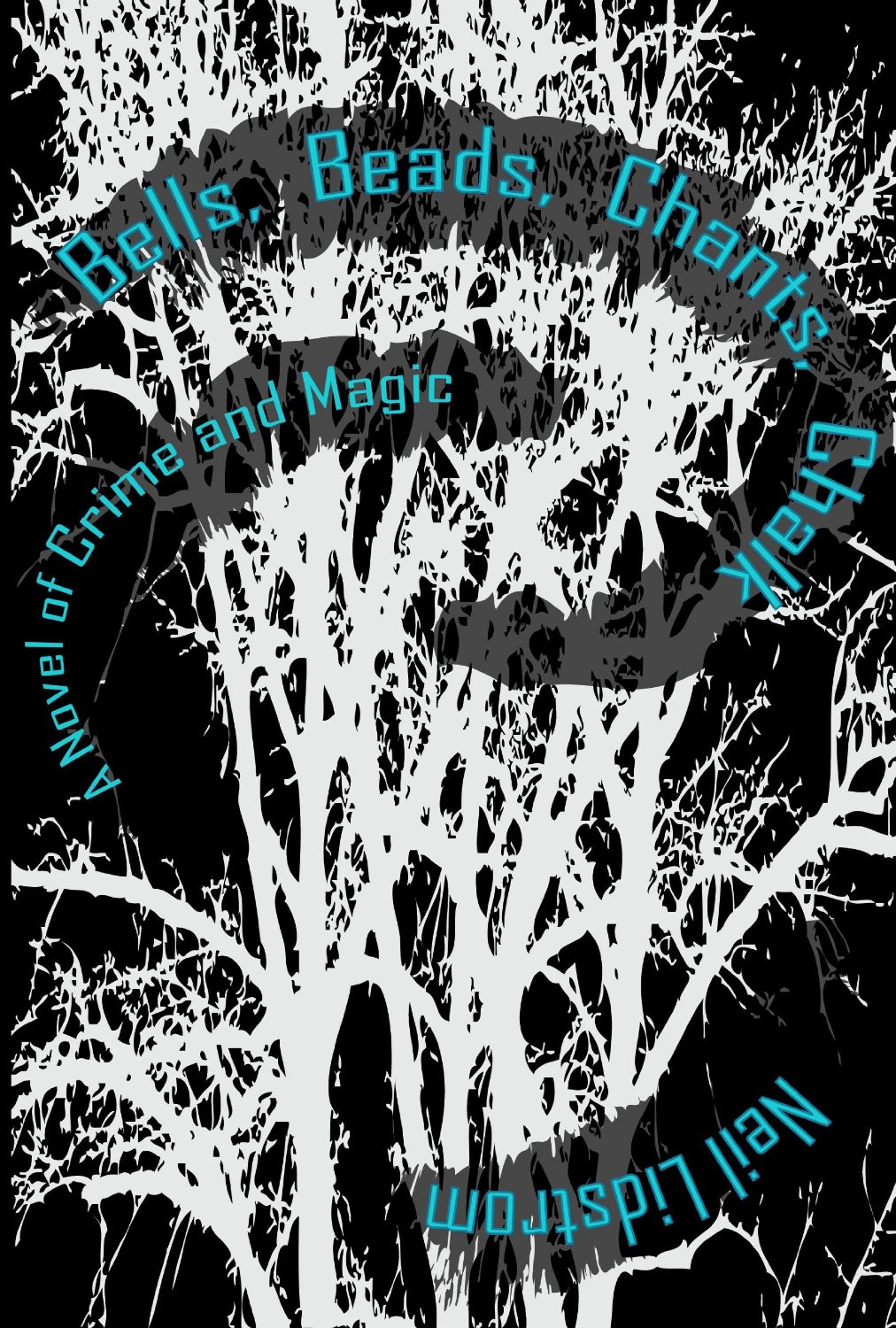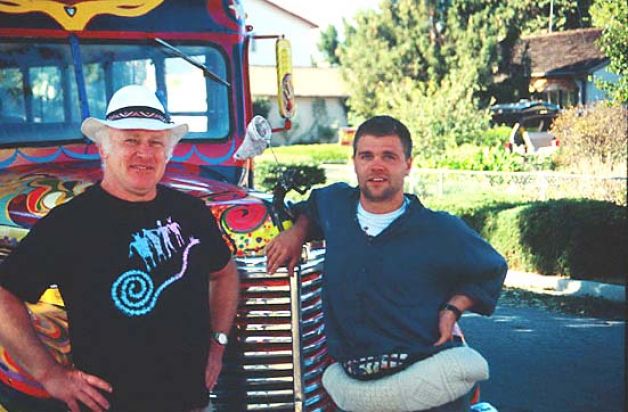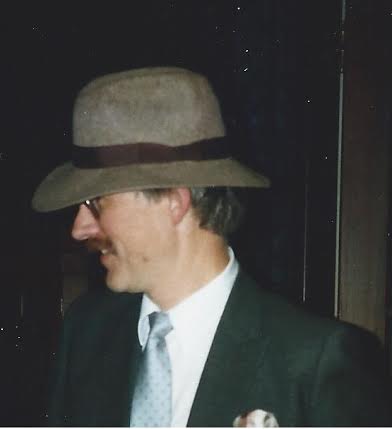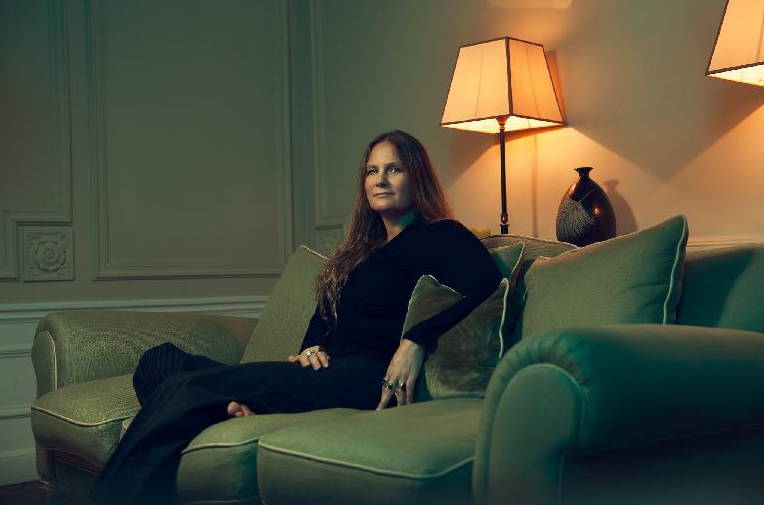During the academic year of 1987-1988, Ken Kesey taught a graduate-level creative writing class of thirteen students at the University of Oregon. He charged the group with producing a full-length novel in one school year, which they did, publishing Caverns under the name O.U. Levon (Novel University of Oregon backwards) in 1990.
It is my intent to interview each living author about the project and what they learned from Kesey.
Neil Lidstrom’s interview is the sixth I’ve published. I outline the project in more detail in my initial posting and provide links to the other interviews.
What is your life like now? Are you still writing?
My life is at some kind of peak. My wife, Joan, is in nursing school, so she’s wrapped up in that and always has amazing new stories. We live with my two-year old grandson, Gabriel, who is a wonderboy and a joy to behold. And the nice thing about grandparenting is that his mother, Sierra, is always there for the cleanup and tantrums and serious impulse-control work. All four of us moved to Portland a couple of years ago, bought a house, and settled in. It’s been a good midlife adventure. I’m a tech writer, working very comfortably from home, for decent, regular pay.
Writing? Hey, I write like mad, hours a day, thousands and thousands of words. My medium is the business email. It doesn’t have to rhyme or make sense. It’s the perfect vessel for my soul-utterances.
I’ve never been able to get any fiction published, other than what I uploaded myself to Amazon, and I’ve never been able to get anybody to read that, but hey, wait a minute, maybe this will help: Bells, Beads, Chants, Chalk – 99 cents! I won’t say this book is the best value you’ll ever see for 99 cents, because who knows what other unbelievable bargains you’ve kicked out of the grass in the past. But you’ve probably wasted 99 cents on worse things. Almost certainly. Give it a shot!
What do you remember most about the process of writing a book with thirteen other people?
Collaborative writing is how I went on to spend my working life. Tech writing is all about hashing things out down to the comma in emails and meetings. There’s often a tiny amount of personal investment, so it can hurt a bit to see your comma removed, but the pain is pretty limited. Just in case you’re the type who throws away your user guides with the shrink-wrap still on, I’ll let you know that the resulting product can be a bit dry.
Now here’s the thing about the class: I missed a big part of it. I showed up every day, wrote my little bit, read it out, and then listened to everybody else’s little bit. By that point, things being what they were, I was somewhat lit with beer, wine, and whatever pot was circling the table, and I had 80 miles to drive. What can I say? I liked having dinner at home and I loved those drives. Two or three hours has always been my limit for large groups of people anyway. So I think I was generally the first to leave, and what I missed was the revision process. I have no insight into that and don’t know how it worked.
In the class writing sessions, I really tried to write stuff that would grab everybody and haul them my way. I did care about the book. Especially at the start of the class, I remember thinking constantly about the characters and certain scenes. I wanted the characters to be the people I thought they were, doing the things I wanted them to do. In other words, I never managed to subsume my ego in the larger project. But the tone of the book changed with every writer, and that disoriented me. By the end of the class I was pretty disengaged, and just enjoying the class and the wacky personalities. A book needs a tone or style, and to me it seems like that’s the first thing you have to establish. But in the Caverns project, there was no tone. I think that’s the key flaw in the collaborative writing scheme.
My opinion only, but none of us individually wrote very well in class. Kesey didn’t write anything great in those 15-minute sessions. And then I had the sense that all our individual contributions were ironed away. What I took away from the class is that collaboration isn’t the way to create lively, engaging writing.
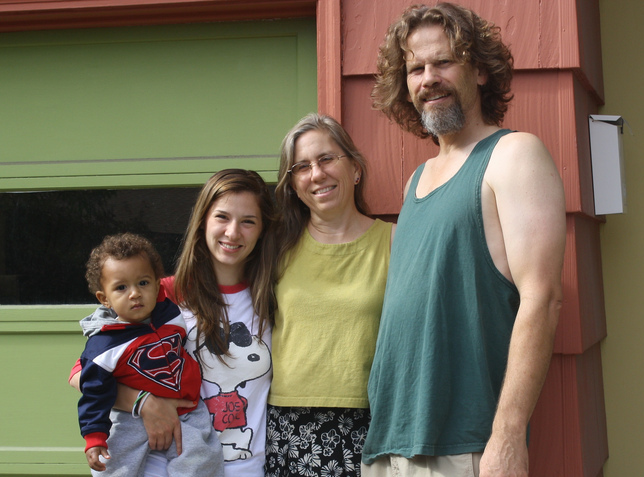
What did you learn from writing Caverns?
I learned about the challenges of working on an intellectual project in a group. I don’t think my writing got any better that year. I don’t remember writing anything of my own during that time. But I think I learned a lot about working in a group – how to ignore bad ideas politely, endure frustration, and enjoy the company of geniuses, wildfolk, and ambitious young artists.
What stands out in your memories of Ken Kesey?
Kesey remained a mysterious figure to me. He was one of these magnetic-personality-type guys you hear about. If he walked into a room where 30 people were carrying on separate conversations, the conversations might not stop, but everybody would be looking at Kesey and listening for whatever he had to say. I guess lots of teachers can do that in the classroom, but Kesey couldn’t clear his throat without people thinking deeply about what he might have meant.
One interesting thing about Kesey is that I never saw him shut anybody down over anything. I remember an illustrative scene at his house once: there were frequently strange people around, and this particular guy I saw this once and never again – a basic crazy longhair, possibly with twigs in his beard. Anyway, he worked Kesey hard for about 20 minutes, trying to wheedle startup cash for a scheme in which black bears would be poached in Canada, and their gall bladders sold on the Chinese quack medicine market. Kesey just kept giggling and listening, then finally got up and drifted off. I don’t think Ken ever said a word to the guy, but he also let him talk all he wanted. Maybe Ken was auditioning him for a short story.
Kesey could also put people into awkward positions. Once he loaded all 12 of us into a closed delivery van and took us for a drive. In the novel, the characters take a long road trip in a bus with sealed-shut windows. Anyway, we took in the experience, discussed our sensations, debated the effect all this darkness and lurching should have on the plot. Nobody threw up. Then we all stumbled back into the light and found ourselves in the parking lot of a strip club, which caused some members of the group serious political distress. But it was either go in and drink beer or sit out in the cold.
Ken did not always come off as a literary genius. Once he told us about a short story he’d written but not published: a middle-aged man shows up at a fraternity after his son, who was a member, has died working on a construction project over the summer. The son has been killed in a dynamite blast. The father brings out a photo album to show the fraternity brothers baby pictures, school pictures, and then athletic photos of his son, who was a champion javelin thrower. The last picture in the album is a dismembered arm, all that remained after the blast. Kesey said, “That’s when the brothers realize that his arm was the only thing that meant anything to them. All they’d known about him was his javelin throwing”. There was a long silence, and then somebody said, ‘The father has a photo of his son’s blown off arm in the album?’ It was uncomfortable to listen to, because the story sounded so awkward and bizarre, and also seemed pretty clearly to address his own son’s death. Of course, any story can sound goofy when you summarize it. I’d like to read that story.
In every conversation I had with Ken, he would bring someone else in. If you asked him a question, he would put it to a larger group. It seemed like all conversations turned into group conversations.
Kesey took us on trips the way your parents took you on trips. It was really great. We all piled into his brother’s RV and headed over the mountains to explore Skeleton Cave. We had ice cream at the SnoCap drive-in in Sisters, Oregon. We got down in the cave and we all turned out our lights. Another time we went over to the coast and had a party at his house in Yachats. I was pretty drunk and missed whole swaths of this one, but I do remember oysters cooking in the fireplace, opening one after another in the heat.
He was kind of a crackpot. He had some really funny ideas, and he knew and acknowledged that they were funny. He told us once that if you believe in a spiritual world, you can’t stop at a dignified theology. You have to let in Santa Claus and the Easter Bunny, too. If you believe, you have to believe in everything. I often had trouble following Ken’s reasoning, but he was a mesmerizing man.
How do you feel about the book as a finished product?
Ken said once that Caverns was as good as plenty of books that get published (he may have compared it favorably to a Jacqueline Susan novel). I’ve never read a Jacqueline Susan novel, and I never actually read all the way to the end of Caverns, so I can’t say. Caverns is pink slime – it’s shaped like a book and has pages and words, but you wouldn’t want to read it. Maybe he was convinced it was better than that, but he had a lot invested in it.
Why do you think Kesey decided to teach the class?
I don’t really know myself why Kesey decided to teach the class. I think he said that he wanted to recreate the kind of writing community he found at Stanford early in his career, but I can’t imagine it took him more than a class or two to figure out that he didn’t have a Robert Stone or Larry McMurtry in Eugene. Another difference is that Kesey and that amazing group at Stanford weren’t goofing around with a collaborative project. They were each writing their own great first novels. I think Ken was mainly interested in the experiment of group writing. And he wasn’t just a guy who dreamed up cockamamie schemes. He followed through on them. He kept at it for a year, continually tinkering with the process and the different personalities in the group, popping another new zig or zag on us nearly every week. He was an impractical project kind of guy. He enjoyed dreaming up hare-brained schemes for groups of people. He opened his house to us and gave us the majority of his time and attention for a year. We were all up for it. It was a hell of a lot of fun.

